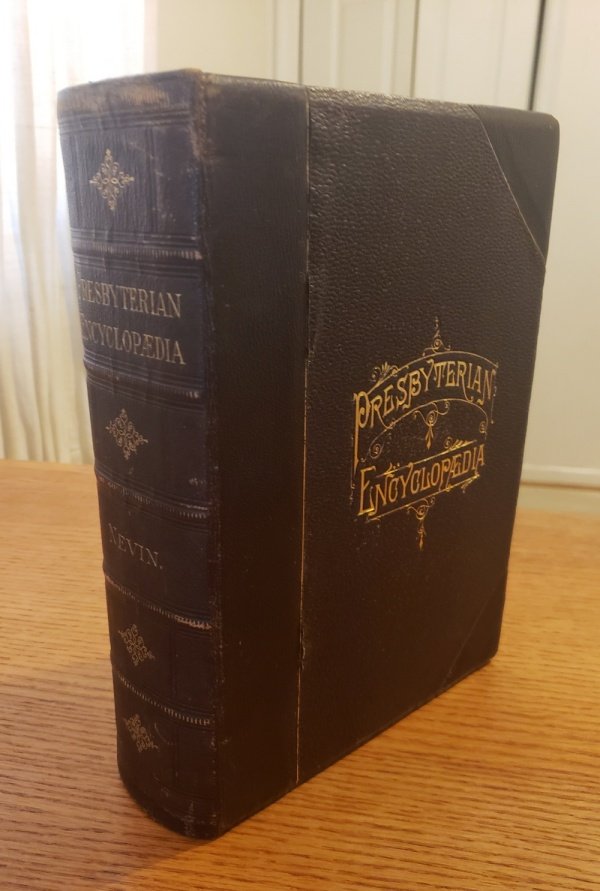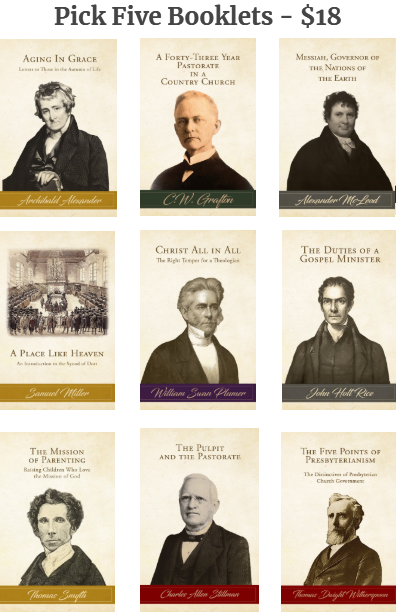(Receive our blog posts in your email by clicking here. If the author links in this post are broken, please visit our Free PDF Library and click on the author’s page directly.)
Who is Thomas Chalmers, and what was his significance to 19th century American Presbyterianism?
Thomas Chalmers (1780-1847) was a Scottish Presbyterian churchman and a leader of the Free Church of Scotland, founded after the 1843 “Disruption.” A man of many interests and gifts, he contributed much to the church and the community in which he served. He is known for his eloquent sermons, his voluminous and edifying theological writings, and for his “West Port Experiment” in Edinburgh (1844-1847). He died on May 31, 1847.
J.W. Alexander highly commended the sermons of Thomas Chalmers and Samuel Davies (Letters, Vol. 1, p. 74).
Charles A. Aiken, in his 1879 Tribute to Charles Hodge, wrote that
It was my high privilege to spend with Dr. Chalmers the last evening but one of his life, Saturday, May 28, 1847. At sunrise on the ensuing Monday, the cry rang through Edinburgh, Dr. Chalmers is dead! Not to go into the details of that memorable interview, let it suffice to say, as bearing upon the passage in the text, that I have never received a more cordial and hearty greeting than that with which, taking both my hands in his own, he welcomed me to Morning-side. He had returned from London only the day before, and spoke of himself as being in unusually good health. All the benevolence of his character came out in his genial smile. His courtesy, his affability, the tones of his voice, the graciousness and even warmth of his whole manner, as he talked with me of grave questions with which the Free Church Assembly, then in session, was likely to be agitated, and the kindliness with which, on my rising to leave, he pressed an invitation for us (the ladies of my party had remained at the hotel that evening) to breakfast with him, first on Tuesday and then on Monday morning — all this made a lasting impression upon me so grateful and so vivid that I cannot at all take in that disparaging estimate of his own social nature which I have quoted from his "Sabbath Readings."
While Chalmers lived, and after his death, American Presbyterians wrote often to him and of him. Below are just some of the writings available on Log College Press that concern Chalmers directly.
Archibald Alexander, The Works of Doctor Chalmers (1841) and Chalmers’ Mental and Moral Philosophy (1848);
J.W. Alexander, The Works of Doctor Chalmers (1841) and Chalmers on Education and Ecclesiastical Economy (1842) [“Chalmers’s experiential preaching and active social philanthropy were of special interest to Alexander in the urban ministry settings where he labored.” — James M. Garretson, Thoughts on Preaching & Pastoral Ministry: Lessons From the Life and Writings of James W. Alexander, p. 296, note 46];
Charles Hodge, An Earnest Appeal to the Free Church of Scotland, on the Subject of Economics (1847);
Clarence E.N. Macartney, Thomas Chalmers (1919);
James McCosh, A Tribute to the Memory of Dr. Chalmers, By a Former Pupil (1847);
Alexander McLeod, Review of Thomas Chalmers on Astronomy (1817) and Review of Two Sermons by Thomas Chalmers (1818);
James C. Moffat, Life of Thomas Chalmers (1853)';
John Holt Rice, August 14, 1819 Letter to Thomas Chalmers (1819, 1835);
Thomas Smyth, The Character of the Late Thomas Chalmers, D.D., LL.D. and the Lessons of His Life From Personal Recollections (1847-1848) in Vol. 3 of Smyth’s Works (1908); and
William B. Sprague, On the Life and Death of Thomas Chalmers (1847).
Some notable American Presbyterians were, presumably, named for the great Scottish churchman, such as John Thomas Chalmers and Thomas Chalmers Vinson.
Respect was directed both ways across the Atlantic. According to William B. Sprague, Chalmers thought of Samuel Miller’s 1831 essay on The Warrant, Nature, and Duties of the Office of the Ruling Elder as “the very best work that has been given to the church on that subject.” (A Discourse Commemorative of the Rev. Samuel Miller, D.D. (1850), p. 29). (An extract from Miller’s February 28, 1831 letter to Chalmers may be read in The Life of Samuel Miller, Vol. 2, p. 167.)
Chalmers was beloved by both Scottish and American Presbyterians, and many others. We remember him today as we recall his entrance into glory nearly two centuries ago. Read more about him, starting with Moffat’s Life of Chalmers, and the tributes to him by James McCosh, Thomas Smyth and William B. Sprague.







